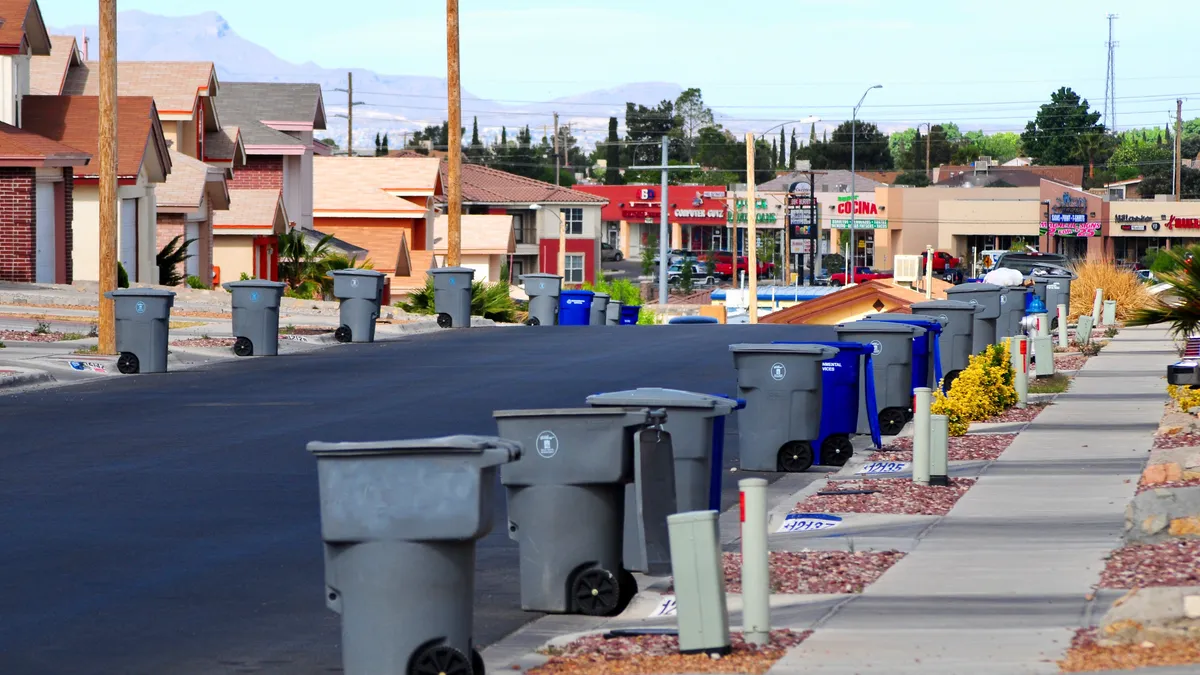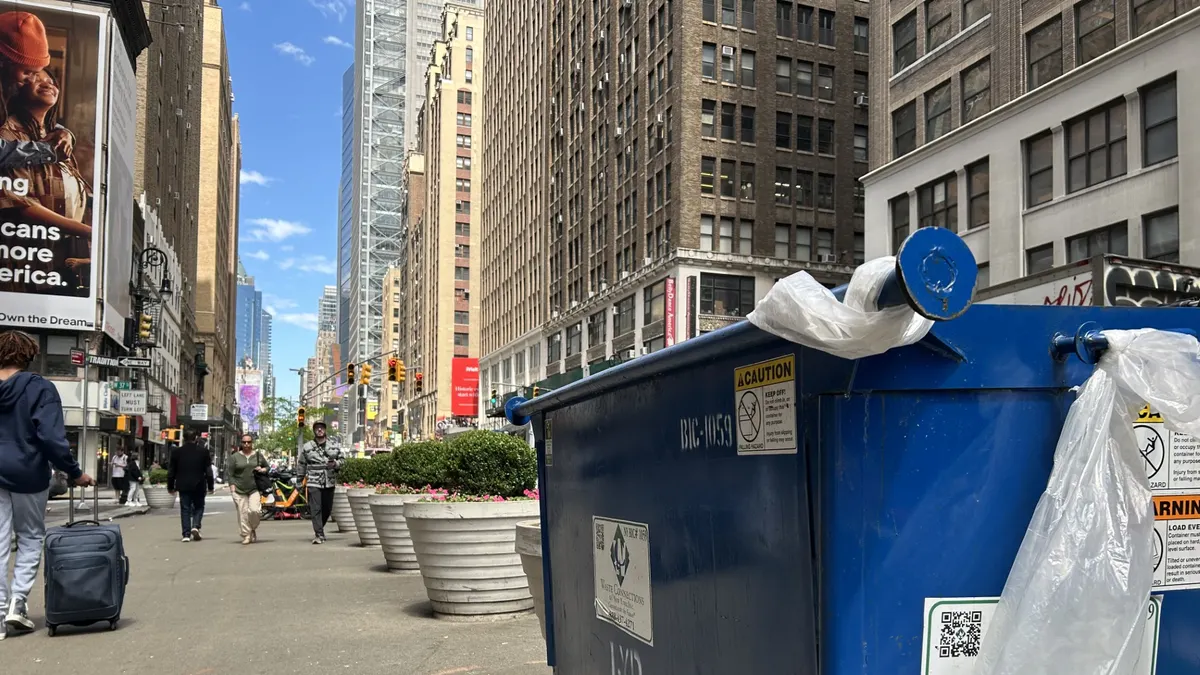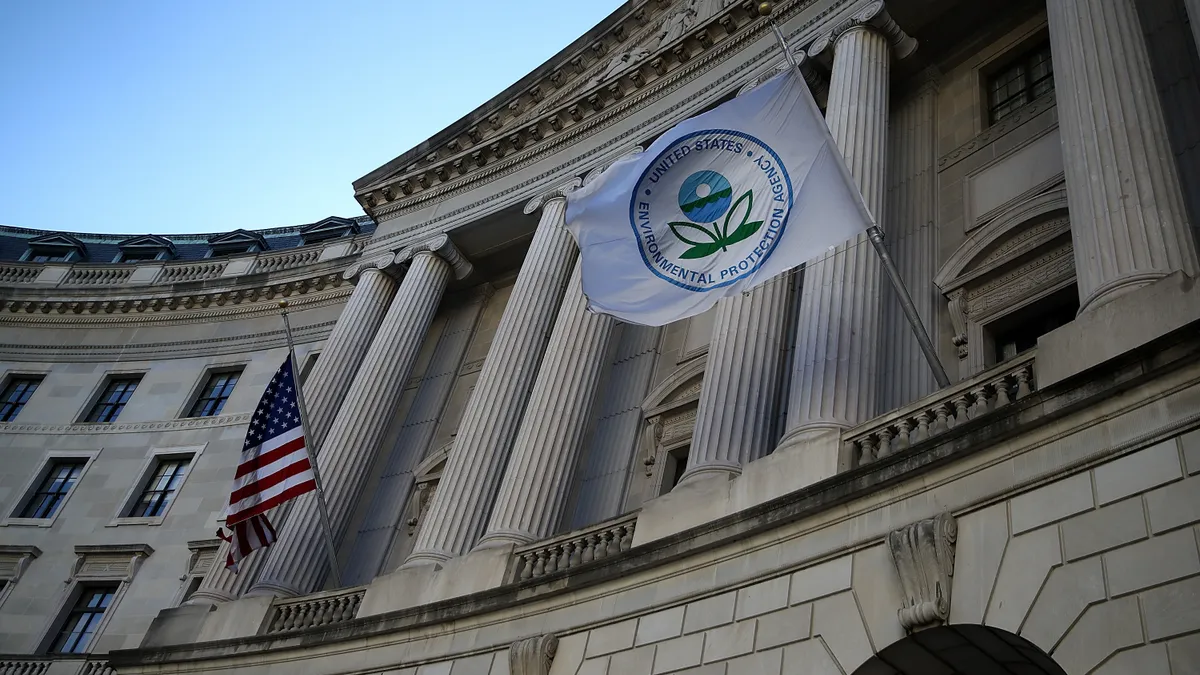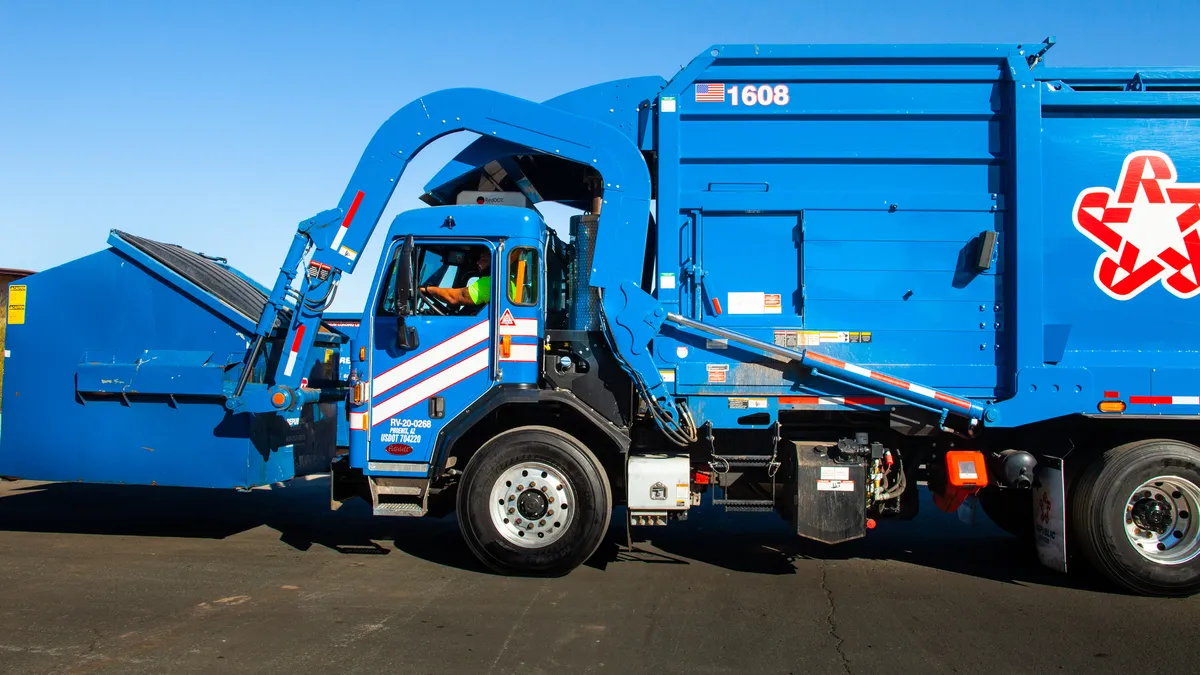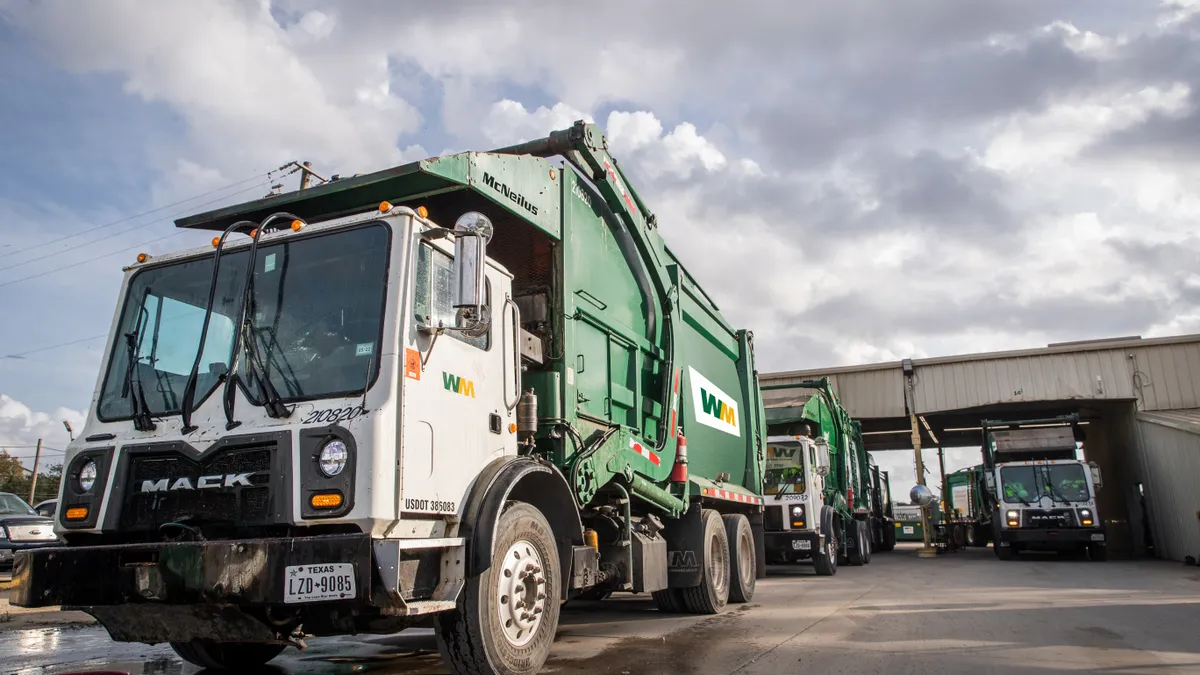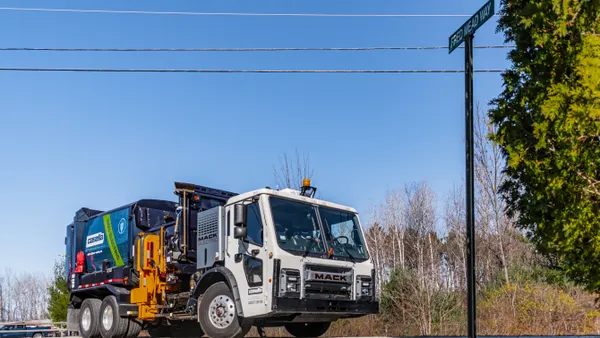The following is a contributed piece and does not reflect an editorial position by Waste Dive.
The waste industry, including MRFs, is experiencing an exit of insurance companies in the market at a rapid pace. There are a number of factors driving this contraction and the accompanying increase in premiums, as well as key solutions industry players can employ to help mitigate their concerns and risk exposure.
A major contributing factor in the contraction is the number of fires at these facilities. There were 343 reported facility fires in the United States and Canada – according to Ryan Fogelman, vice president of fire elimination solutions at Fire Rover – which is up 13% from 2018.
With the frequency and severity of these fires increasing, insurance companies are paying out much more than they are taking in on premiums. The result is a mass exodus of insurance carriers from this sector. Waste facility and MRF operators are feeling the impact of the withdrawal in the form of decreased coverage options and higher premiums.
In addition to facility fires, catastrophic events (such as hurricanes, flooding, and wildfires), automotive exposure and safety risks also are contributing to insurance marketplace changes within the industry.
The waste and recycling industry is not alone in its challenges when seeking market options. The insurance industry as a whole has experienced high loss ratios since 2013, due largely to an increasing frequency of severe property and liability losses as well as litigation costs with escalating jury awards. The challenge of insuring risk on a profitable level means insurance companies must pull back or decrease coverage availability.
A year ago, more than 20 carriers offered coverage to the waste and recycling industry. Today that number stands at about 10 players interested in writing property insurance. For example, Lloyd’s of London pulled back on writing policies for waste and recycling operators in the U.S., but it continues to offer coverage internationally as it is perceived that risk management measures in other countries are more robust than those in U.S.-based facilities.
To further illustrate, a California-based hauling and processing company survived a fire where the company’s insurance provider worked diligently to mitigate the damage caused in the incident. However, after 2016, the insurance provider quickly exited the waste industry altogether, leaving the company uninsured.
Another factor driving the reduction in the number of carriers writing property coverage for the industry is the dwindling number of reinsurers participating in the waste and recycling market. Over the last several years, substantial claims stemming largely from fires, flooding and hurricanes have driven them out.
Facilities with multiple claims events over the last few years are having the most difficulty finding coverage. With loss payouts significantly higher than collections in premiums, insurers are unwilling to renew their policies.
Factors driving higher premiums
The waste and recycling industry is currently facing a hard insurance market, which is the result of a finite number of reinsurance markets available for the insurance carriers to acquire coverage.
Losses from catastrophic events are calculated to help reinsurers determine what next year’s coverage capacity will look like, as well as the costs associated with it. For example, if reinsurers see mounting losses from a catastrophic event, this will result in a decrease in capacity along with higher costs to make up for the losses from the previous year. In other words, reinsurers are charging insurance carriers higher rates for reinsurance coverage and those increases are being passed on to policyholders.
Rate increases are having an impact across the board, especially on facilities that have experienced more than one loss. Those with multiple claim submissions are seeing premiums increase by as much as 500%.
Umbrella coverage, which sits over underlying polices such as auto, general liability and workers compensation – and provides additional limits from covered causes of loss – is also becoming more costly. With premiums increasing between 50% and 100% over 2019 pricing. Here, again, capacity and reinsurance are driving factors.
Auto insurance is another coverage area where waste and recycling companies are experiencing premium increases. Many of the trucks used in the industry are classified as extra heavy trucks, weighing in at 45,000 pounds or more. When a heavyweight vehicle is involved in an accident, it generally experiences less damage than the object that has been hit. The resulting increase in lawsuits and claims from incidents involving these vehicles is rapidly resulting in a decrease in the number of carriers offering auto coverage, as well as higher rates from carriers that remain. 2019 was identified as the worst year ever recorded for auto-related losses.
What can be done
There are no quick fixes for the challenges of current insurance market conditions. However, there are options waste and recycling industry operators can employ to help address their needs and concerns.
By taking a self-insured retention (SIR), operators essentially will demonstrate to carriers they are confident in their own companies. It is important to note that, in this context, taking on a deductible or SIR does not mean capping it at a small amount. Operators need to consider a minimum commitment of $25,000, and in some cases this may not be enough to truly move the premium needle. While this is not financially practical for everyone, operators who do have the means can use the deductible or SIR to help mitigate potential increases in premiums.
Operators also should work with their insurance agents to outline internal improvements in areas like training, driver criteria, equipment maintenance and housekeeping protocols. The goal here is to open up additional insurance options by demonstrating to the underwriting community that their facilities are best in class.
The good news for the waste and recycling industry is that, like all businesses, the insurance market ebbs and flows. Stability in the market will eventually expand capacity, which will normalize the foothold in the market and reduce premiums. However, until that happens, waste and recycling facility operators should be prepared for an insurance marketplace that is much different from what it was previously.
Nathan Brainard, AAI, is vice president of the environmental division at Insurance Office of America and is the endorsed insurance partner of the National Waste & Recycling Association.


